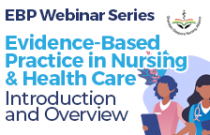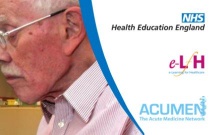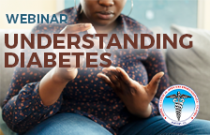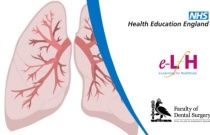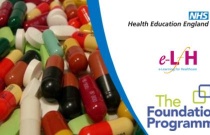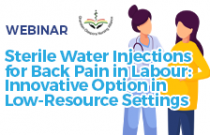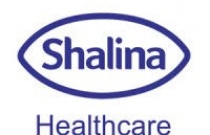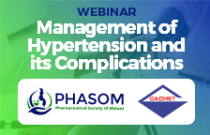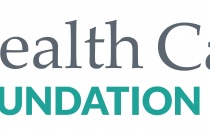Megaloblastic Anaemia and an Approach to Macrocytosis
Dr Shinny Alimia
To discuss the aetiology, pathophysiology, clinical features, diagnostic approach and management of megaloblastic anaemia from vitamin B12 and folate deficiency. In addition, cover an approach to macrocytosis.
Control of NCDs in PHC: An Eco-Bio-Psycho-Socio- Spiritual Approach
Dr. Mercy Wanjala
This presentation would aim to cover the multidimensional aspects of managing Non-Communicable Diseases (NCDs) in a primary healthcare setting, acknowledging the complexity of factors that influence health outcomes.
Therapies to Treat Inflammation in Cardiovascular Disease
Joseph Saseen
0.75 Hours
Learn how to assess and manage inflammation in cardiovascular disease with the latest therapeutic approaches. This course will provide you with practical tools to incorporate into your clinical practice, enhancing your ability to effectively treat inflammatory conditions and collaborate with the care team.
Reflecting on Well-Being: Focus on the Health of Nurses
Keith Jones
1.00 Hours
Investing in your well-being is essential for long-term success and patient care. Learn how to foster resilience, balance work and life, and cultivate a sense of community, all while implementing sustainable well-being programs in your practice. Enhance your personal health and professional effectiveness through proven self-care....
Mobilizing Nurses to Reduce Hypertension Burden
Janet Wright
0.75 Hours
This course equips nurses with the tools to address hypertension within diverse populations, focusing on disparities, policies, and community-based solutions. By understanding your pivotal role, you’ll be empowered to lead efforts in reducing hypertension burden and improving patient outcomes.
Recognizing Pulmonary Hypertension
Traci Housten, and Lisa Mahe
0.50 Hours
In the first episode of this three-part content series on pulmonary hypertension, hear from guests Traci Housten, RN, MS, and Lisa Mah er, DNP, ARNP, FNP - BC, and FPCNA. Traci and Lisa discuss the complexity of recognizing pulmonary hypertension from the general cardiology and specialty clinician standpoint and dive into what p....
Hypertrophic Cardiomyopathy: Comparing Traditional & Novel Treatments
Heidi Salisbury
0.75 Hours
Learners will be able to define and diagnose Hypertrophic Cardiomyopathy including non - obstructive and obstructive, describe the journey of a HCM patient using a case study approach, review traditional treatment, pharmacological and lifestyle modifications, for HCM, and e xplore nov el pharmacological treatment including mecha....
Leadership Series 3: Crucial Conversations
Lisa Maher
2.00 Hours
Join fellow PCNA members and experienced nursing and healthcare leaders for the next Leadership Series program. In this series, learn how to spot the tricky conversations that trip you up while on the job, whether between patients or colleagues. Hear tips and tricks to improve your crucial conversation skill sets, including util....
HIV/AIDS Management
Mr Limbikila Ng'ambi
HIV and AIDS remains a threat to global health. According to WHO, it is estimated that 42.3 million lives have been lost due to AIDS globally. This lecture aims to deepen understanding on HIV, its medications and patient management.
OREO SPONSORED
Mr WCEA Administrator
Kathy Wilson BDS PhD MSc MFDS (RCS Edin) DDPH (RCS Eng) Associate Specialist in Dental Sedation, e-Den Module Editor for Module 3 Dr Kathy Wilson is an Associate Specialist in Dental Sedation at Newcastle Dental Hospital. Currently lecturing in the field of dental sedation and special care dentistry at undergraduate and p....
Empowering the Frontline: Bridging Theory and Practice in Renal Nursing Education
Ms Rose Gitau
This session explores the often-overlooked but critical role of student nurses in the prevention of kidney disease within clinical settings. Drawing from real-life case scenarios and practical experience, it highlights how early clinical exposure—when guided intentionally—can shape competent, kidney-conscious nurses. The ses....
NABISCO SPONSOR
Mr WCEA Administrator
intensive care, aged care, stroke, and neurological rehabilitation. He is the developer of the Rehab ABC framework, an evidence-informed tool designed to improve nursing documentation and support functional, goal-directed care. Rehab ABC has been successfully implemented across rehabilitation units in Australia and New Zealand.....
QR test 2 - attendance
Mr WCEA Administrator
Course Description* Please add a course description with a minimum of 20 characters.
Evidence-Based Practice in Nursing and Health Care - Introduction & Overview
Mr. Stephen Adombire, Dr. Diana Baptiste & Dr. Cindy Zellefrow
This is the first webinar in a multi-part series that introduces participants to the foundations of evidence-based practice (EBP) in nursing and healthcare. This session will provide an overview of key EBP concepts and distinguish EBP from related approaches like research and quality improvement, and explore its role in delive....
Speech Disturbance Case 02
Sadia Ismail
This interactive scenario describes one of a number of possible cases where a patient presents with speech disturbance. As you progress through the scenario you will have the opportunity to apply your knowledge and skills to diagnose and treat this patient. Once you have specified a treatment plan, a simulation of the patient's....
Understanding diabetes and systemic approach to management of complications of diabetes in diabetic patients for clinical officers
OKELLO FRANCIS BCMCH,PGCMH,PGCDNH, PGDCRM, PGCCGP
CPD for all clinical officers on how to manage diabetes and it's complications
Respiratory Disorders and the Dental Patient
Pav Sarai and Ros Perring
This session provides an overview of some of the clinically important respiratory challenges you may come across as a dental practitioner.
Prudent Use of Antibiotics (Part 2)
Nick Cooley, Greg Scutt and Paul Wade
The aim of this session is to promote rational use of antibiotics in optimising treatment of patients with infections and reducing emergence of antibiotic resistance. Risks associated with antimicrobial use in patients who may have penicillin allergy will be explained. UKFP Curriculum 2021 This e-Learning session covers so....
Sterile Water Injections for back pain in Labour: Innovative option in Low-Resource Settings
Ms Awube Menlah
This webinar presents the use of Sterile Water Injections (SWI) as a simple, cost-effective, and evidence-based method for managing low back pain among women in labour. In many LMIC’s settings where resources for pain management are limited, SWI offers a safe, empowering alternative for both midwives and birthing women. The sess....
Workforce Motivation and Retention Among Migrant Nurses in Regional Australia
Dr. Princess Villamin RN
This presentation will provide an overview of nurse migration in Australia, discuss primary research on nurse migration and retention, and explore migrant nurses’ motivations for retention in regional workplaces.
Management of Hypertension and Its Complications.
Dr Hanafih Umali Nkhata
This CPD session aims to strengthen the knowledge and competencies of pharmacists, pharmacy technicians, and other healthcare professionals in the prevention, diagnosis, and management of hypertension—a leading contributor to morbidity and mortality in Malawi and globally.
Essential Services Package for Women and Girls Subject to Violence
Tania Farha and Riet Groenen, Upala Devi and Luis Mora, Claudia Garcia Moreno and Avni Amin, Suki Beavers, Niki Palmer and Charles Chauvel, Claudia Baroni and Sven Pfeiffer, Ms Clarice Da Silva e Paula and Ms Kerry Neal, Ms Theresa Kilbane, Mr Peter Gross
The United Nations Joint Global Programme on Essential Services for Women and Girls Subject to Violence, a partnership by UN Women, UNFPA, WHO, UNDP and UNODC, aims to provide greater access to a coordinated set of essential and quality multi-sectoral services for all women and girls who have experienced gender based violence.....
Public event - no pretest or post test
Mr WCEA Administrator
Course Description* Please add a course description with a minimum of 20 cha













